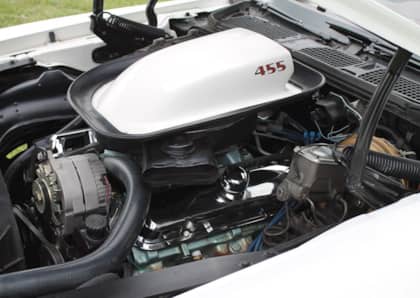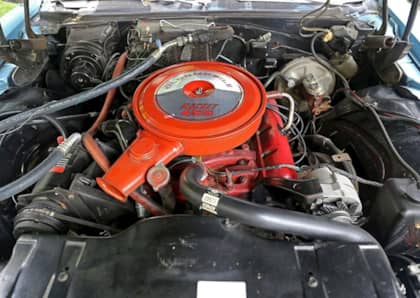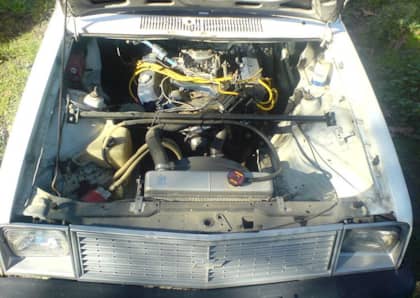A History Of The Buick 455 V8, GM's Overlooked Big Block V8
1970 was an exciting time for fans of big block V8s. Shortly after relaxing its short-sighted ban on stuffing large displacement engines in small to mid-size cars—the very formula that had given birth to the muscle car era with the Pontiac GTO in the early '60s—it suddenly seemed like every one of its decisions was churning out massive lumps producing huge heaps of horsepower.

One such beneficiary of GM's new largesse was Buick. Like its corporate sibling Oldsmobile, in 1967 Buick began building a big block V8 as its most cutting edge engine option, evolving it over the next few years from 400 cubic inches to 430 cubic inches. Suddenly free from the requirement that this motor be kept to its full-size sedans and coupes, in 1970 the automaker would explode its mightiest motor to date—the 455—across three times as many vehicles.
The birth of the Buick 455 cubic inch V8 marked the sweetest slice of the brand's muscle car era, and created more than a few legends that would last past its mid-decade twilight.
Bigger Is Better
Buick had been flirting with GM's 400 cubic inch limit in 'intermediate' cars for a number of years, producing models like the Gran Sport 400 mid-sizer that offered V8 engines that pushed up against the internal restriction. After introducing the 430 in the full-size Buick Riviera coupe (as well as the large Electra and Wildcat nameplates), it was only natural to continue developing the same engine technology that had replaced the older nailhead at the beginning of the 1960s.

By 1970 the big block had been punched out to a whopping 455 cubic inches, which suddenly gave smaller cars like the Skylark and the newly-independent Gran Sport serious heat at a time when the entire muscle car movement was boiling over.

While both Pontiac and Oldsmobile would also introduce 455 V8s in the same period, each design was unique, having been done in-house and sharing nothing with its fellow GM drivetrains. Buick's entry into the big block derby was notable for its lightweight, thin-walled casting, as rather than increasing the stroke of the 430 engine (like Oldsmobile had done in adapting the 425 ci V8 to 455 cubic inches), it bored out the cylinders.

As a result, almost every component between the 430, 400, and 455 could be interchanged, except for the pistons. Buick also offered a range of cylinder heads for the motor, not all of which were compatible with the smaller displacement big blocks. Base versions of the motor produced 350hp and 510 lb-ft of torque, while the 'Stage 1' package offered larger valves, a higher compression ratio, and a choppier cam to improve output to a posted 360 horses (often claimed to be underrated by as much as 35 horsepower).
More Torque Than Anyone Else
That massive torque number helped make Stage 1-equipped cars formidable drag strip warriors, and it also offered a sizable improvement over the figure provided by the 400 cubic inch motor. The Buick GS Stage 1 was joined by the more flamboyantly-styled, but mechanically similar GSX as the company's primary straight line weapons.

Buyers with a bit more cash could snag the 'Stage 2' package for the 455, which installed forged pistons, a lighter rotating assembly, a different set of heads (featuring round exhaust ports), a better-flowing header and exhaust setup, and an even more aggressive camshaft. Compression was also improved to 11.0:1. Primarily a dealer-installed option, very few Stage 2 cars were ever built, and with an estimated output approaching 500hp, it was aimed primarily at professional drag racers.
Too Short A Season
After a single year of glory, the Buick 455 began to fall back to Earth. Worried about the upcoming mandate for lead-free gasoline, GM began to reduce engine compression across almost its entire lineup, and Buick was one of the first to feel the pinch.

By 1972 the motor was rated at a modest 250hp (in part due to design changes, combined with the move to net versus gross horsepower), and the GSX would be out of the picture by 1973.

Buick would extend the life of the 455 big block by stuffing it in models like the Centurion and the Regal, (all while keeping it afloat in the Riviera and the Electra and LeSabre). None of these larger cars had the performance chops of the departed Gran Sport, and instead relied on the motor's still formidable torque to make up for negative effects of the pollution controls and low-quality gasoline that by the middle of the '70s had become a reality for all American vehicles. After 1976 the 455 left Buick's catalog forever.

Today the Buick 455 V8 is an appealing choice for engine builders willing to work with its thinner walled design. With the right heads and camshaft, it's simple to transform even a later version of the motor into a 500hp build (with a girdle required to strengthen the block past the 600hp mark). There's no shortage of aftermarket support out there to let you push the glory days of the 455 well past its abbreviated reign as the king of GM's street muscle.
More From Driving Line
- Curious about Oldsmobile's own 455? Check out our history of this alternative big block V8.











